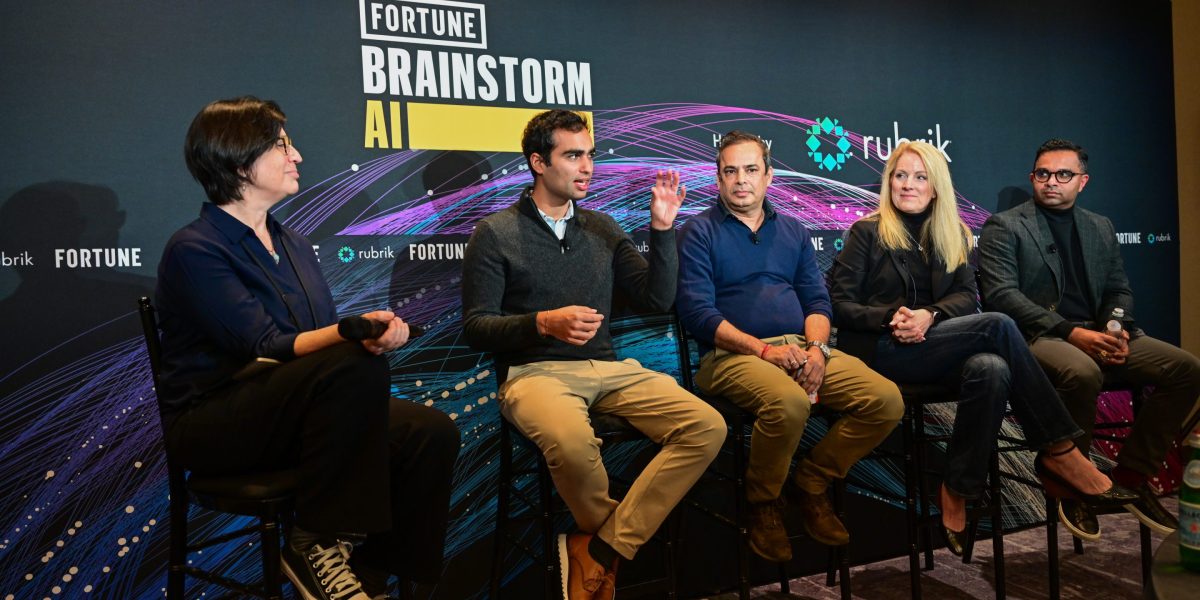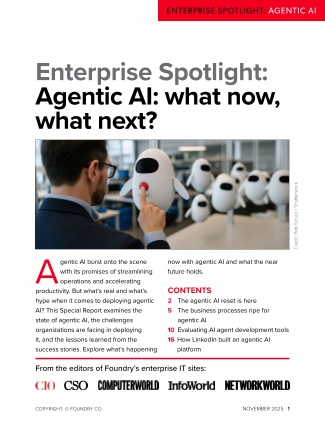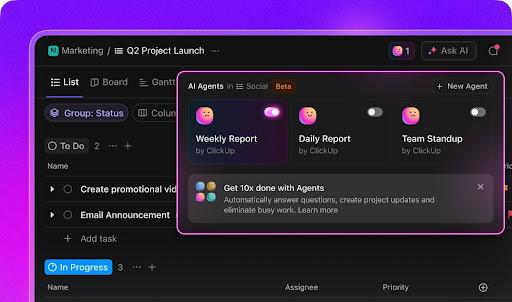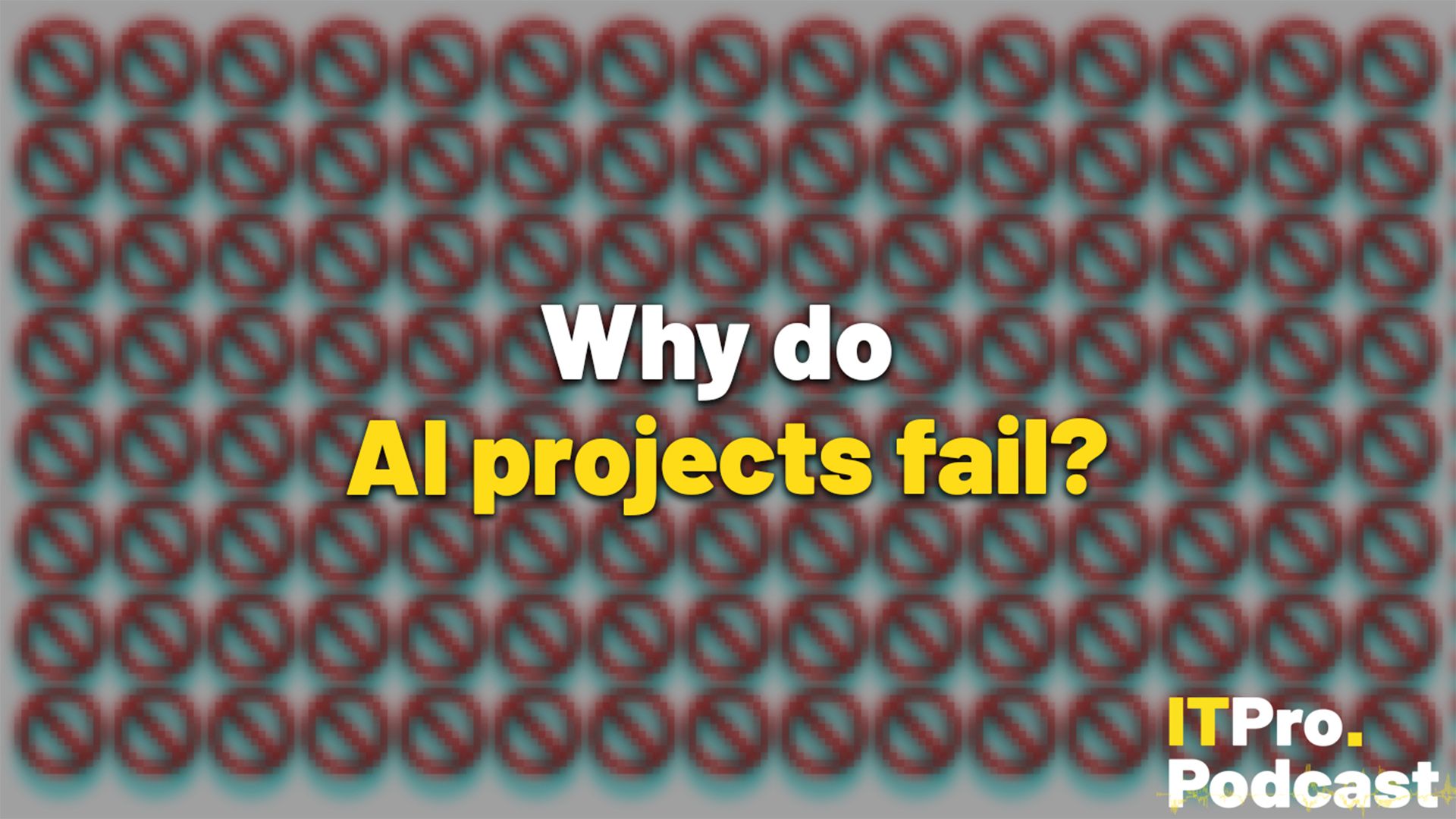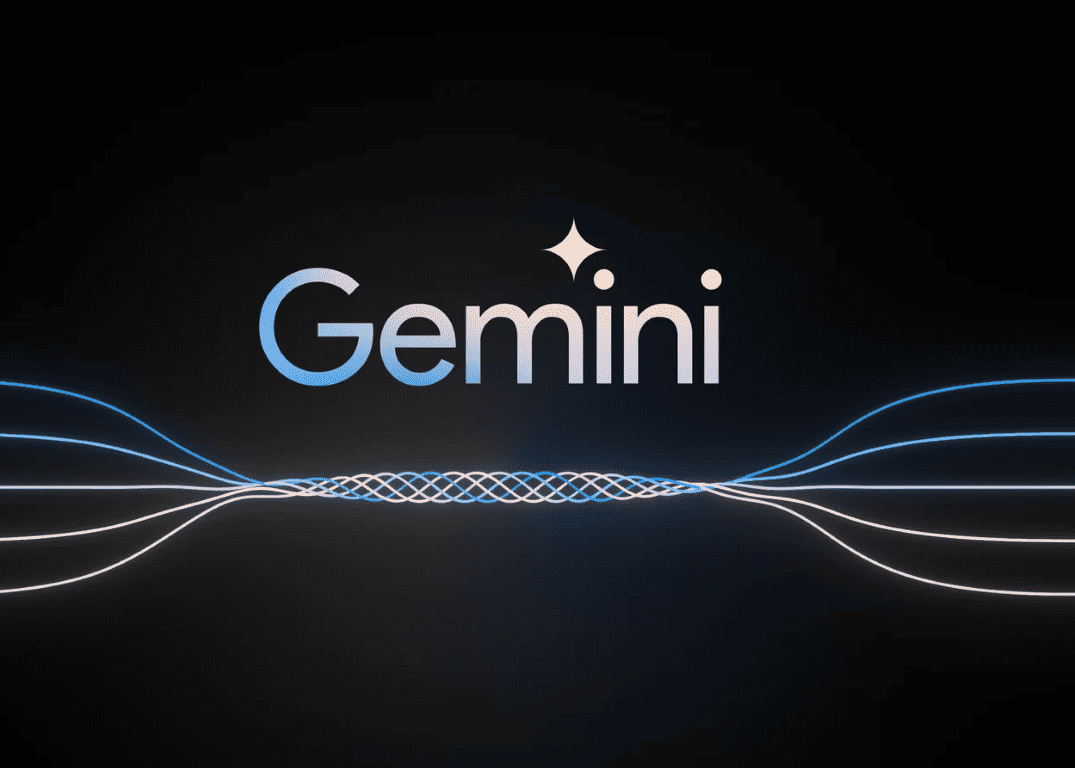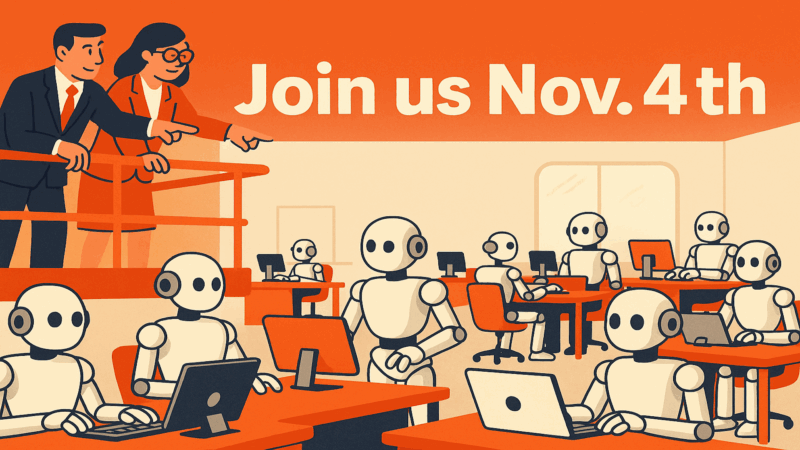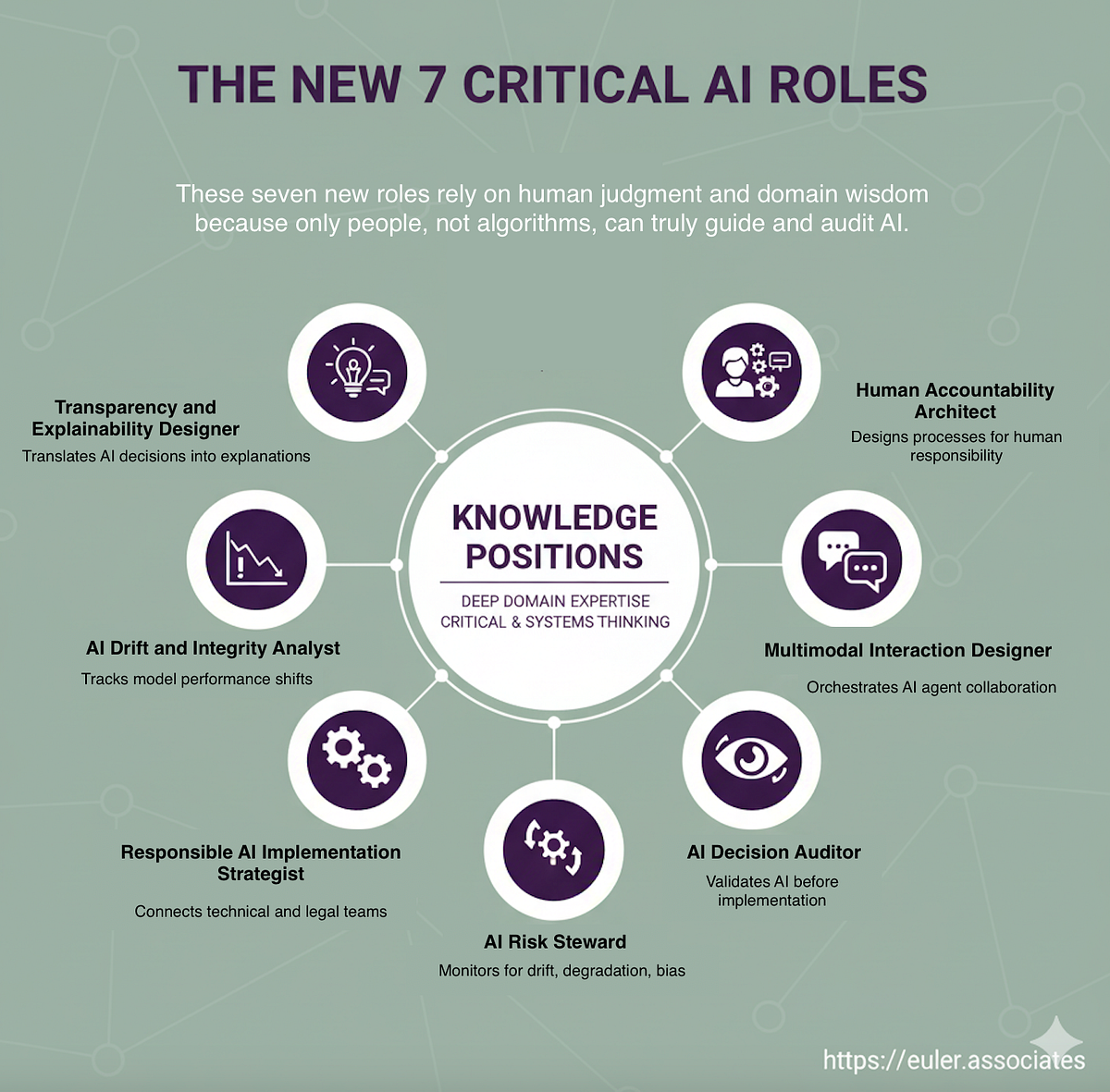#ai-governance
#ai-governance
[ follow ]
#generative-ai #enterprise-ai #shadow-ai #ai-safety #ai-adoption #agentic-ai #cybersecurity #ai-agents
Artificial intelligence
fromComputerWeekly.com
3 days agoSecurity pros should prepare for tough questions on AI in 2026 | Computer Weekly
Enterprise buyers now require detailed, auditable AI governance covering data sovereignty, human oversight, model accountability, security, and intellectual property compliance.
fromFortune
3 days agoInside tractor maker CNH's push to bring more artificial intelligence to the farm | Fortune
CNH has scored some wins that Schroeder has been able to track. The company is leaning on AI to assist software engineers who are focused on precision agricultural technology and the FieldOps farm management systems, where AI, machine learning, and sensors are applied to digitally enhance farming. Early data has shown that these engineers are reducing the time needed for documentation by 60%, giving them more time to write new code.
Agriculture
fromNature
4 days agoChina is leading the world on AI governance: other countries must engage
As Nature reported last week ( Nature https://doi.org/qhbv; 2025), one country is pushing forwards with plans to change that. China is proposing to set up a global body to coordinate the regulation of AI, to be known as the World Artificial Intelligence Cooperation Organization (WAICO). Establishing such a body is in all countries' interests, and governments around the world should get on board.
Artificial intelligence
fromNextgov.com
4 days agoNew House commission to scrutinize AI's impact on the economy
The House Democratic Commission on AI and the Innovation Economy - which will convene throughout 2026 - includes Reps. Ted Lieu, D-Calif., Josh Gottheimer, D-N.J., and Valerie Foushee, D-N.C., as co-chairs. Reps. Zoe Lofgren, D-Calif., and Frank Pallone, D-N.J., will serve as ex officio co-chairs, due to their positions as ranking members of the Science, Space and Technology Committee and the Energy and Commerce Committee, respectively.
US politics
Information security
fromFortune
1 week agoServiceNow's Amit Zavery explains why the company is buying identity management platform Veza | Fortune
ServiceNow acquired Veza to add identity and access management for humans and AI agents, strengthening customer data access control, security, and governance.
Artificial intelligence
fromwww.theguardian.com
1 week agoAI poses unprecedented threats. Congress must act now | Bernie Sanders
Artificial intelligence and robotics will profoundly transform society, concentrating power among wealthy tech investors and posing unprecedented economic, political, security, and ethical risks.
Intellectual property law
fromIPWatchdog.com | Patents & Intellectual Property Law
2 weeks agoAI, IP and Data Risk: Responsibly Adopting AI While Safeguarding IP | IPWatchdog Unleashed
Organizations must enable safe, governed AI use by employees to boost productivity while protecting intellectual property, trade secrets, and data security.
fromNew Relic
2 weeks agoThe Responsible AI Revolution: How New Relic's ISO/IEC 42001 Certification Changes the Game
In line with our AI Principles, we're thrilled to announce that New Relic has obtained ISO/IEC 42001:2023 (ISO 42001) certification in the role of an AI developer and AI provider. This achievement reflects our commitment to developing, deploying, and providing AI features both responsibly and ethically. The certification was performed by Schellman Compliance, LLC, the first ANAB accredited Certification Body based in the United States.
Artificial intelligence
fromNature
2 weeks agoThe Internet is broken and the inventor of the World Wide Web wants to fix it
This Is for Everyone reads like a family newsletter: it tells you what happened, recounting the Internet's origin and evolution in great detail, but rarely explaining why the ideal of a decentralized Internet was not realized. Berners-Lee's central argument is that the web has strayed from its founding principles and been corrupted by profit-driven companies that seek to monetize our attention. But it's still possible to "fix the internet", he argues, outlining a utopian vision for how that might be done.
Books
fromComputerWeekly.com
3 weeks agoEU sets out plans to cut red tape on digital | Computer Weekly
The initiative includes European Business Wallets, which the European Commission (EC) said will offer companies a single digital identity to simplify paperwork and make it much easier to do business across EU member states. Valdis Dombrovskis, commissioner for economy and productivity, said: "Today's proposal represents an important first step in our digital simplification agenda, aiming to create a more favourable business environment for European companies."
Miscellaneous
fromZDNET
4 weeks agoGoogle Brain founder Andrew Ng thinks you should still learn to code - here's why
AI has rapidly become a reliable coding assistant for many developers -- so much so that many are wondering about the future of the entire profession. Entry-level coding jobs are dwindling for recent grads as teams offload junior tasks to AI assistants; at the same time, experts cite the real limitations of these tools as proof that engineers will never actually become obsolete.
Artificial intelligence
fromwww.dw.com
1 month agoIndia charts its own course on AI regulation DW 11/11/2025
The guidelines advocate using existing legal frameworks like the Information Technology Act and the Digital Personal Data Protection Act to handle emerging risks such as deepfakes and unauthorized data use. "India's AI governance adopts a balanced, agile and flexible approach that promotes innovation and safety," Amal Mohanty, AI policy expert and one of the lead authors of the guidelines, told DW. He said India's approach is different to the rules charted by the EU, China and the US. "Unlike the EU's detailed AI Act that imposes strict, rule-based obligations based on risk classification, ours favors self-regulation and voluntary measures," he said. "This allows developers more freedom to innovate while managing AI risks responsibly."
Artificial intelligence
Intellectual property law
fromAbove the Law
1 month agoLocking In Trust: Key Terms For Strong AI Vendor Contracts - Above the Law
Vendor agreements must clearly allocate responsibility, mandate regulatory compliance, require operational transparency, and specify ownership and use rights for AI projects.
fromTechzine Global
1 month agoHow SAP upskills 100,000 employees for the AI era
Chief People Officer Gina Vorgiu Breuer explains how the enterprise software giant is preparing its global workforce for a future where AI handles 42% of tasks-without replacing humans. At SAP Connect in Las Vegas, Breuer outlined SAP's comprehensive AI workforce strategy to Techzine TV. The approach goes beyond simply introducing new tools; it fundamentally reshapes how the company thinks about jobs, skills, and human potential in an AI-augmented workplace.
Artificial intelligence
Artificial intelligence
fromHarvard Business Review
1 month agoHow AI Will Forge the Next Generation of Cybersecurity Talent - SPONSOR CONTENT FROM PALO ALTO NETWORKS
AI will not make cybersecurity roles obsolete; it will automate routine tasks and increase demand for humans with judgment, creativity, and AI-governance skills.
fromwww.independent.co.uk
1 month agoThe AI minister who is pregnant with 83 children'
World's first AI minister set to give birth' to 83 children' Albania's prime minister, Edi Rama, has announced that Diella, the world's first AI minister, is pregnant with 83 children. Speaking in Berlin, Mr Rama said that Diella will soon give birth to the children. who will assist individual members of parliament. These children will have the knowledge of their mother, he said. Their roles will include participating in parliamentary sessions, maintaining records, informing MPs on how to react, and summarising discussions.
Berlin
fromFast Company
1 month agoWhy businesses banning AI inevitably lose
Those AI tools are being trained on our trade secrets. We'll lose all of our customers if they find out our teams use AI. Our employees will no longer be able to think critically because of the brain rot caused by overreliance on AI. These are not irrational fears. As AI continues to dominate the headlines, questions about data privacy and security, intellectual property, and work quality are legitimate and important.
Privacy professionals
fromFortune
1 month agoWhy CFOs must bridge finance and tech teams to realize AI's full value | Fortune
EY's newly released 2025 Technology Risk Pulse Survey, based on responses from more than 400 U.S. executives at companies with over $1 billion in annual revenue, reveals a growing gap between finance and technology leaders on AI priorities. According to additional data shared with CFO Daily, 56% of CFOs vs. 70-72% of CIOs and CTOs say AI integration is a top priority over the next two to four years.
Business
fromeLearning Industry
1 month agoA Human-Centered Framework For AI In L&D, Part 2: Programmatic Enablement
To avoid a chaotic, ad hoc and, above all, risky AI implementation, all of your people need to be onboarded to your AI strategy and vetted collection of AI tools. It's also great for your people: Research shows that folks who understand AI are more likely to engage with AI tools and less likely to view AI with fear or mistrust. And given the 82% of leaders planning to expand the capacity of their workforce with digital labor, there's no time like the present.
Online learning
fromTheregister
1 month agoLloyds Bank claims Microsoft Copilot saves 46 minutes a day
We quickly identified the transformative impact that AI could deliver across our organisation, and over the last few years have put in place the assurance frameworks and tools we need to deploy AI safely and at scale. "With these foundations in place, we're reimagining how we operate by embedding AI across our business to drive smarter decisions, faster outcomes and better experiences.
Artificial intelligence
fromTelecompetitor
1 month ago52% of Telecom Companies Lack Budget and System Readiness for AI: Report
A new report from IFS - a provider of industrial artificial intelligence (AI) software - said there is an "invisible revolution" in which the focus is shifting from productivity-led AI experimentation to "embedded, operational AI across core business processes." The report, titled "The IFS Invisible Revolution Study 2025," surveyed more than 1,700 senior decisionmakers at industrial enterprises around the world. The report noted what IFS refers to as an "execution gap," in which companies moved into AI faster than their team members can upskill.
Artificial intelligence
Information security
fromComputerWeekly.com
1 month agoGitex 2025: Help AG aims to be global cyber force as UAE leads AI security transformation | Computer Weekly
Help AG delivers sovereign, regulation-aligned cyber security and AI-driven services to governments and critical industries, expanding from the GCC into global markets.
fromBusiness Insider
1 month agoHoward Schultz said he's Worried - 'with a big W' - about AI
"If we look back on the last 10, 15 years on social media, I think we'd be hard pressed to say that the velocity and the impact and the adverse effect of social media is equal to, or more than, the benefits that have occurred," he said. "And one of the reasons is the fact that there wasn't regulation, and the regulation that has come is too late." He said AI is progressing so fast and "the regulators are so far behind, they don't even know what the questions are because of the speed of this thing."
Artificial intelligence
fromZDNET
1 month agoA minority of businesses have won big with AI. What are they doing right?
Many businesses have had to learn in recent years that adopting AI to automate certain organizational tasks or employees' day-to-day workflows won't necessarily translate to financial gain. The technology may make workers more productive in some respects, but it also presents a whole host of risks -- some of them involving cybersecurity, some of them legal, some of them psychological. In some cases, AI actually creates more work for supervisors.
Artificial intelligence
fromThe Verge
1 month agoSam Altman says ChatGPT will soon sext with verified adults
"As we roll out age-gating more fully and as part of our 'treat adult users like adults' principle, we will allow even more, like erotica for verified adults," Altman writes. Earlier this month, OpenAI hinted at allowing developers to create "mature" ChatGPT apps after it implements the "appropriate age verification and controls." OpenAI isn't the only company dipping into erotica, as Elon Musk's xAI previously launched flirty AI companions, which appear as 3D anime models in the Grok app.
Artificial intelligence
fromFast Company
1 month agoExclusive: Big Philanthropy teams up to take on Big AI
Ten major philanthropic organizations are banding together to ensure that regular Americans, not just a small group of tech billionaires, have a say in how AI will shape society and who will benefit. The organizations announced Tuesday the formation of Humanity AI, a $500-million five-year initiative aimed at ensuring artificial intelligence serves people and communities rather than replacing or diminishing them.
Artificial intelligence
Artificial intelligence
fromComputerWeekly.com
2 months agoMicrosoft and the UAE: Driving AI from strategy to real impact | Computer Weekly
The UAE is accelerating national AI leadership with Microsoft-driven infrastructure, talent programs, and enterprise AI deployment to scale responsible, measurable outcomes.
Artificial intelligence
fromFortune
2 months agoI had a front-row seat to the social media revolution in global affairs roles at Twitter and Meta. The same mistakes are happening in AI | Fortune
AI is becoming a foundational public utility and repeating past mistakes of fast, unchecked deployment could create exponentially greater harms than social media.
fromwww.theguardian.com
2 months agoWe research AI election threats. Here's what we need to prepare for | Samuel Woolley and Dean Jackson
We study AI and democracy. We're worried about 2050, not 2026. Half of humanity lives in countries that held national elections last year. Experts warned that those contests might be derailed by a flood of undetectable, deceptive AI-generated content. Yet what arrived was a wave of AI slop: ubiquitous, low quality, and sometimes misleading, but rarely if ever decisive at the polls.
US politics
fromMarTech
2 months agoThe hidden AI risk that could break your brand | MarTech
AI tools, such as chatbots, promise speed, savings and scalability. But behind each successful interaction, there's a less visible truth: when AI systems operate without active oversight, they silently accumulate risk. These hidden liabilities-spanning brand damage, operational drag, ethical concerns and cybersecurity gaps-often remain undetected until a public crisis erupts. Here are three real-world cases of AI assistant deployment. Each began as a quick win. Each revealed what happens when governance is an afterthought.
Artificial intelligence
Artificial intelligence
fromComputerWeekly.com
2 months agoHow the UAE is using AI to transform healthcare | Computer Weekly
The UAE institutionalised AI leadership by appointing CAIOs across ministries to align AI with sector missions, focusing on data, trust, and strategic transformation in healthcare.
Artificial intelligence
fromFortune
2 months agoHow Coca-Cola's leadership developed a taste for AI that helped distribute the technology across its beverage empire | Fortune
Coca-Cola created a cross-functional digital council to align leadership, standardize AI investments, eliminate duplication, and focus technology on consumers, customers, and employees.
fromFortune
2 months agoHow Visa wove AI into every facet of the company by approaching it as both a science and an art | Fortune
According to Rajat Taneja, Visa's president of technology, the global payments company has woven AI into every part of its business. Employees across Visa are tapping AI in their everyday workflows for tasks ranging from data analysis to software development. The company has built more than 100 internal AI-powered business applications tailored to specific use cases and has over 2,500 engineers working specifically on AI. Visa is also using AI to create new products and services for its customers, such as faster onboarding, simplified processes for managing disputes, and infrastructure for agentic AI technologies.
Artificial intelligence
fromFortune
2 months agoIntroducing Fortune's first-ever Most Influential Women Asia ranking | Fortune
Lisa, Jennie, Rosé, and Jisoo have broken numerous records since their debut in 2016: the first to sell one million, then two million, album copies in South Korea; the first Korean group to top the Billboard 200 album chart; the highest-grossing concert tour by a female artist. Blackpink, and K-pop and K-culture more broadly, are now a source of South Korean "soft power," expanding the country's cultural influence across Asia and beyond.
Women
[ Load more ]
